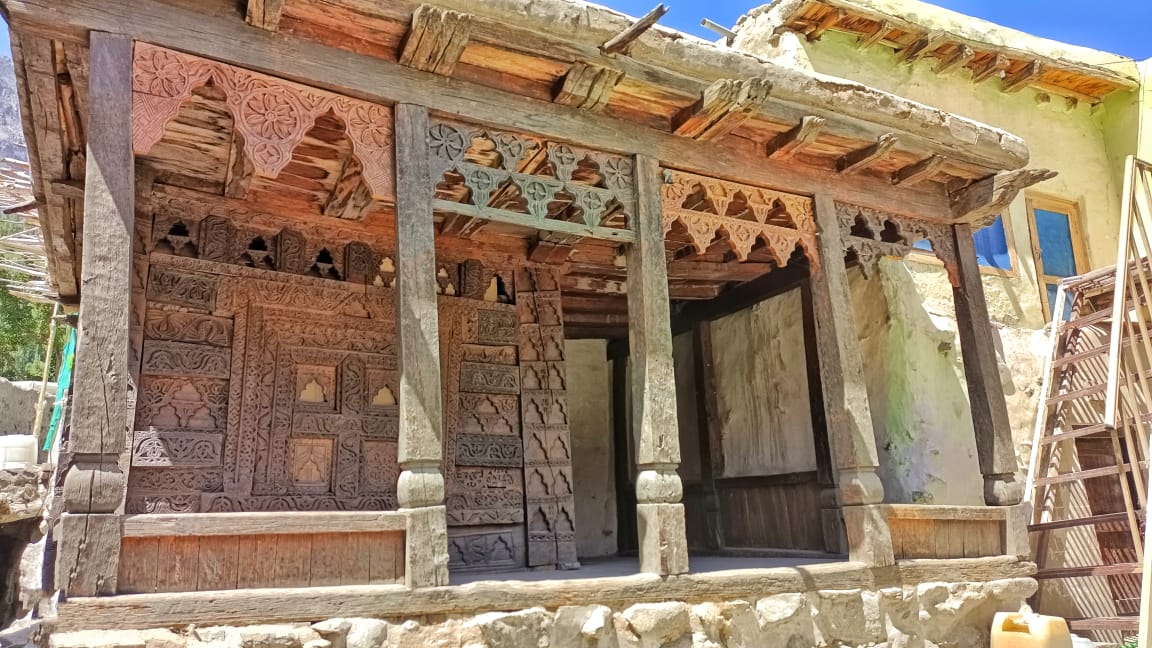Well Come To Ganish
Ganish Hunza is the oldest settlement in the Hunza Valley, known for its centuries-old stone houses, preserved watchtowers, and rich cultural heritage. Nestled amidst majestic mountains, it reflects the traditional architecture and timeless beauty of Gilgit-Baltistan.
History
Caravan serai
Architecture and Daily Life
The houses in Ganish are made of rocks, lined with river mud, and reinforced with timber beams. They are simple but functional. The compact nature of these homes, with small entrance doors and narrow streets, served both as insulation during winter and as a defense mechanism. In order to guard against intruders and provide warmth, livestock was frequently kept close to the entrances. The walled residential area of the village is accessible through a single, locked doorway at night, and the public area, where travelers once stayed, is divided into two sections. The camel rings embedded in the walls of the two-story caravanserai (guesthouse) serve as a reminder of the village’s significance along the Silk Route.

What makes these mosques extraordinary is their fusion of artistic styles. The Islamic mihrab, Hindu swastika, Buddhist lotus flower, and Chinese cloud symbols in the wooden reliefs and carvings highlight the extensive cultural exchange that took place along the Silk Route. These motifs illustrate the multi-faith influences and the region’s historical openness to diverse cultures.
Aga Khan Cultural Service Pakistan (AKCS-P)
The preservation of these mosques was led by the Aga Khan Cultural Service Pakistan (AKCS-P), in collaboration with the local community. The conservation project not only stabilized these structures but also revitalized the jataq, reinforcing the communal heart of the village. The project won the UNESCO Asia-Pacific Heritage Award of Distinction in 2002 for its sensitive conservation approach.

Visiting Ganish
While Karimabad in Hunza Valley attracts most tourists, Ganish offers a more intimate and authentic experience. The village now has a formal entry system, with a modest fee for visitors, ensuring that tourism contributes to its maintenance. Guides such as Mr. Shabir Ahmed, who have lived in Ganish their entire lives, lead informative tours that bring the village’s fascinating past to life. Ganish is a living museum where the past and present seamlessly blend, whether it’s in the village pond, the ornate mosques, or the ancient watchtowers.
